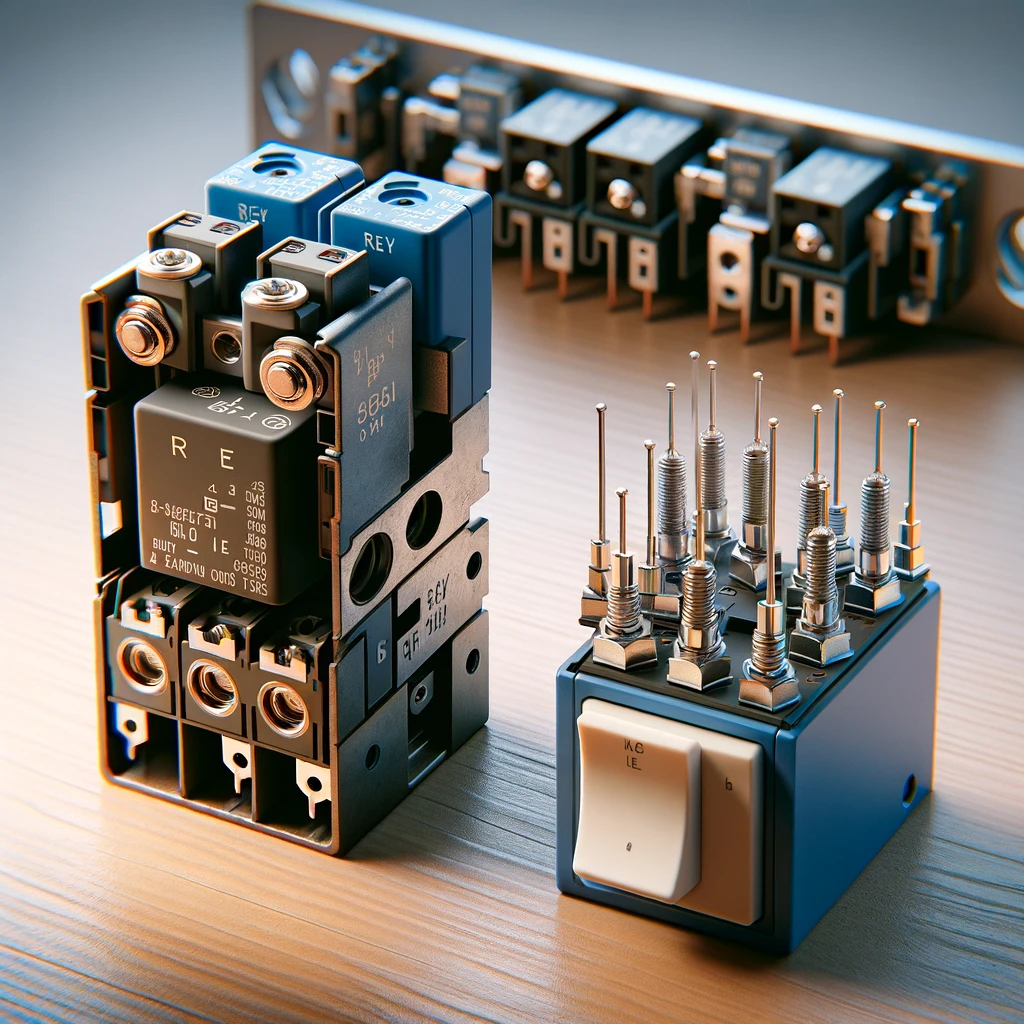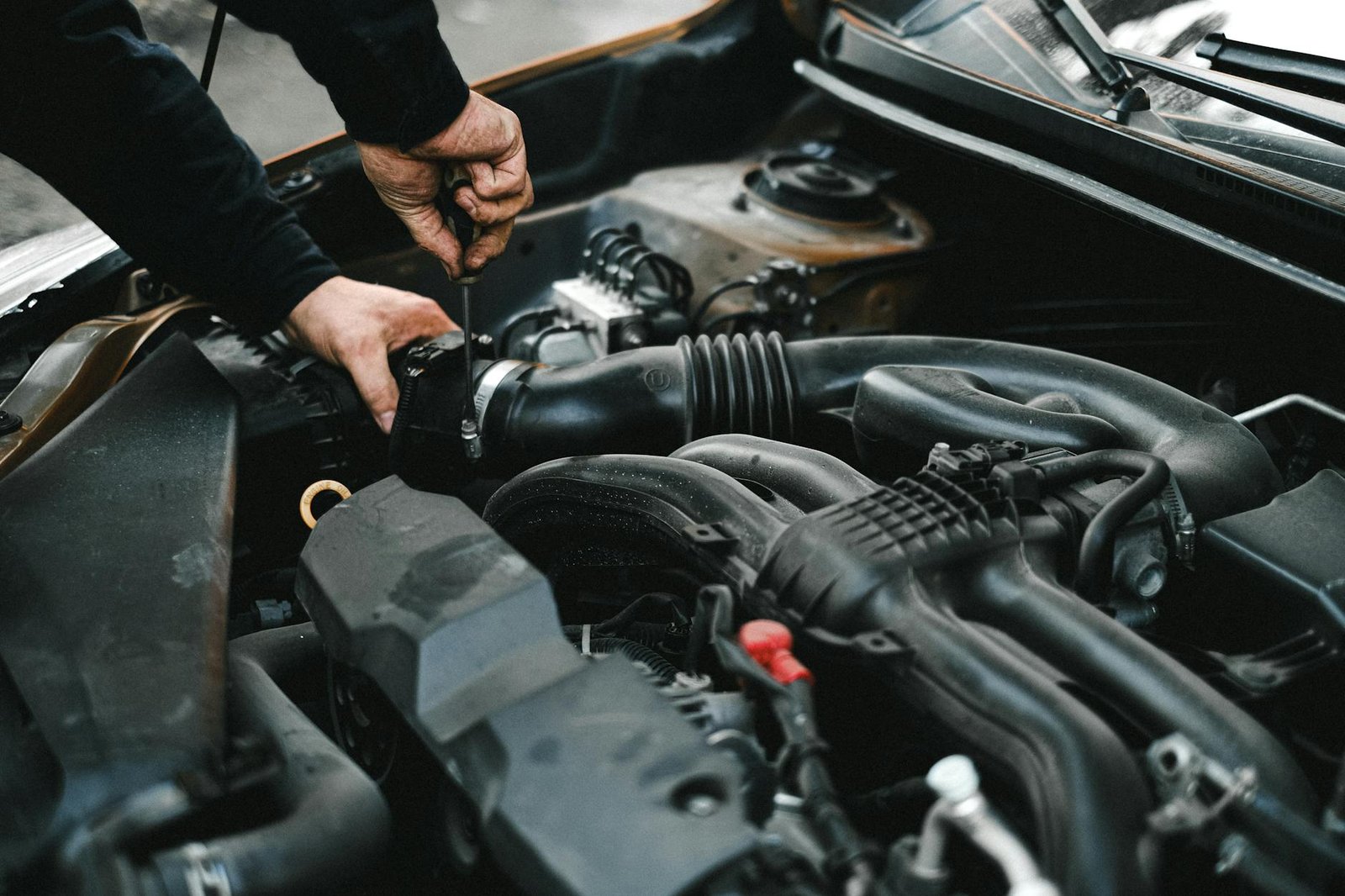An Introduction to the World of Relays
Did you know that every day we depend on a small, seemingly insignificant device known as a relay?
Every single time you flip a switch in your home or start your car, relays spring into action behind the scenes. This tiny marvel of engineering, though unseen, plays an integral role in our everyday routines, powering up our machines and systems without us ever realizing it.
Understanding the function and role of a relay, a piece of technology often overlooked, will give you insight into how a myriad of modern systems operates.
From construction projects to car components, relays are everywhere, silently and efficiently playing their pivotal roles.
So, let’s jump in and unlock the world of relays: how they function, how they’re used, and why they’re so critical to the technology that powers our lives every day.

Table of Contents
What is a Relay Used For?
Definition of a Relay
Before we start talking about its uses, let’s first define what a relay is.
In simplest terms, a relay is an electrically operated device that opens or closes circuits within an electrical device. It’s essentially a switch that is operated by electricity.
Building Context: How Does a Relay Work?
Breakdown of a Relay’s Functionality
Here’s an easy-to-understand snapshot of how a relay functions:
- Initially, a current is supplied to the relay.
- When this current exceeds a specific threshold, the relay switches and either opens or closes the circuit that it is connected to.
- This, in turn, triggers or stops another device.
The Role of a Relay in Construction
So, what is a relay used for?
Here’s where we are getting to the meat of our discussion. In the realm of construction, relays play a fundamental role. They help regulate power systems, controlling a large voltage circuit with a small voltage one, thus ensuring safer, more efficient projects.
Key Uses of Relays in Construction
Let’s take a look at some specific tasks that relays handle in a construction setting:
| Use | Description |
|---|---|
| Power Regulation | Relays control various aspects of a building’s power system, including lighting, HVAC systems, security systems, and more. |
| Safety Protection | By controlling power distribution, relays can help prevent electrical fires and other safety hazards. |
| Energy Efficiency | By ensuring optimal function of power systems, relays support energy efficiency in building operations. |
Now, isn’t it amazing how a tiny device can play such a pivotal role in construction projects?
Ultimately, understanding the function and role of a relay can help you gain a more thorough understanding of building operations and construction processes.
Remember, every tiny piece contributes to the integrity and functionality of the bigger picture. And in the case of construction projects, that “bigger picture” is the successful completion of a fully operational building.

What is a Switch and its Comparison to a Relay?
So now that we know the ins and outs of a relay, let’s go into another often-heard term in the world of construction: switches.
Is your next question “What’s the difference between a switch and a relay?”
If so, sit tight because we’re about to explore just that.
The Definition and Role of a Switch
Just as we defined a relay, let’s establish what a switch is.
Typically, a switch refers to a simple device that interrupts or diverts the flow of electric current in a circuit. Unlike a relay, switches are operated manually. They play a critical role in connecting and disconnecting electronic devices from electric power, enabling flexibility and control over electrical systems.
The Distinction Between a Switch and a Relay
Switches Versus Relays: Control Methodology
Switches and relays might seem similar considering they both control electrical circuits, but nuanced differences set them apart, primarily in the method of control:
- Relay: As we’ve learned, a relay is operated electrically through a current. When the designated current is hit, the relay flips and alters the circuit it’s connected to.
- Switch: A switch, on the other hand, requires manual operation. This could be as simple as flipping a light switch to connect and disconnect an electrical circuit.
Switches Versus Relays: Protection and Automation
Another key distinction between these two devices lies in their relation to protection systems and automation:
- Relay: When used in construction, relays, particularly protective ones, function to identify abnormalities in the electrical system and disconnect faulty sections. Relays also greatly contribute to the automation of electrical systems, as the automatic switching of currents can trigger or halt operations of other devices.
- Switch: In contrast, switches often have a more operational role, manually controlling the functioning of devices. While there are automated switches, their usage is generally more limited than that of relays in construction.
| Device | Control | Usage in Construction |
|---|---|---|
| Relay | Electric-operated | Protection and automation |
| Switch | Manually-operated | Electric current control |
The specifics of a construction project, including its complexities and requirements, usually determine whether relays or switches are used. Understanding the distinctions between the two is essential for an overall understanding of the larger construction process.

Relay Functionality within a Car
After exploring the world of construction, what about the role of relays in car? Is a relay in automotive context any different?
As a matter of fact, relays, like in construction, perform a vital role in cars, too. With such a central role in construction or automotive world, it is increasingly clear that the humble relay really is the unsung hero of any ‘show’.
The Function of an Automotive Relay
While relays in construction are primarily used to manage power systems, automotive relays have a distinctly different role. Whether for powering the starter motor, headlights, fuel injection systems, or air conditioning units, relays form an integral part of modern automobiles.
The Working Principle
Just like their construction counterparts, automotive relays work on the simple principle of activating a larger circuit with a smaller one. This functionality helps in controlling high-power circuits without direct interaction, aiding safety measures and circuit longevity.
A typical example of this is your car headlights. When you switch on the headlight switch, this low current signal activates the relay, which then allows a higher current to flow to the headlights. Hence the relay now acts as a kind of mediator, protecting the headlight switch from high power current damage.
Specific Uses of a Car Relay
What else can a relay do inside a car? Below is a glimpse into some specific functions of relays in your vehicle:
| Application | Description |
|---|---|
| Starter Relay | When the ignition is activated, the starter relay powers the starter motor, setting the car engine in motion. |
| Fuel Pump Relay | To prevent current overload and protect the fuel pump circuits, the fuel pump relay controls fuel pump power. |
| AC Compressor Relay | To ensure the car’s air conditioning compressor operates optimally, an AC compressor relay is used to control electricity flow. |
The Significance of a Relay
Whether you’re brighter for gaining insights into construction practices or for understanding your car’s electrical systems better, it’s clear that everything around us interacts in some way or another.
Be it a colossal skyscraper, or a tiny automotive component, each component plays its part, and the importance of understanding these elements should never be underestimated.

More about Relays: Types and Usage
If you’re still intrigued by the multifaceted world of relays, then let’s explore the different types of relays and their specific applications.
After all, as we learned previously, different tasks require different types of relays. But what are these types, and how are they applied in real-world scenarios?
Categories of Relays
On the broadest level, relays can be divided into two main categories: electromechanical relays and solid-state relays. However, within these categories, we have specific types configured for distinct applications.
The Electromechanical Relay
The Working Principle of Electromechanical Relays
Electromechanical relays are the traditional types of relays where the movement of mechanical parts creates the switching action. When the coil inside the relay gets energized, it creates a magnetic field that attracts the armature.
This armature motion either opens or closes the contacts, thereby controlling the connected circuit.
Types of Electromechanical Relays
While the working principle of electromechanical relays is the same, they do come in different types, each with unique characteristics:
- General Purpose Relays: These are the simplest type of relays, primarily used for basic on/off functions in circuits.
- Power Relays: Similar to general-purpose relays, power relays can handle larger electrical loads, making them suitable for industrial use.
- Reed Relays: Small and fast-acting, these relays have sealed contacts, making them a good fit for high-speed or sensitive applications.
The Solid-State Relay
Understanding Solid-State Relays
Unlike electromechanical relays, solid-state relays have no moving parts. They make use of semiconductor components to perform the switching action.
Because of this, they are known for their long life, fast response time, and silent operation.
Types of Solid-State Relays
Here are the most common types of solid-state relays you might come across:
- AC Output Solid-State Relays: This type of relays controls AC loads and is most often used for SSR designs.
- DC Output Solid-State Relays: Often used in DC-powered systems, they are typically quieter and faster than mechanical relays.
- AC/DC Output Solid-State Relays: These relays can control both AC load and DC load which makes them versatile.
Relay Applications in the Real World
A Closer Look at Relay Usage
We’ve discussed what a relay does and its roles in construction and automotive environments. But where else might we come across this humble yet powerful device in our daily life? Let’s uncover some buzzing applications that use relays; some might even surprise you!
Key Areas of Relay Application
Here’s a snapshot of some common (and not so common) relay applications:
| Application | Description |
|---|---|
| Home Appliances | Relays are used in many home appliances like refrigerators, washing machines, and air conditioners to control electric circuits and ensure safety and efficiency. |
| Communication Systems | From telephones to modern data communication systems, relays help establish, maintain, and terminate connections. |
| Industrial Automation | Relays, especially solid-state ones, are widely used in industrial automation systems for their durability and quick response times. |
| Medical Equipment | Relays are used in medical devices to control electric currents, offering reliability and precision. |
| Space Applications | Did you know that relays also find their way into satellites and spacecraft? They control current flow and protect these devices from electrical failure. |
Relays—Unseen but Indispensable
Relays comes in different types and sizes and hides in various places from buildings and cars to space satellites, silently performing its duties. This device seems tiny, but it’s a giant when it comes to the impact it has.
Unseen, unheard, but undeniably significant—that’s the relay.
So, the next time you switch on a light or start your car, remember the relay: the small device with a big job.
Final Thoughts: Harnessing the Power of a Relay
In nutshell, a relay may be a small piece of the puzzle in the grand scheme of construction, but its significance cannot be overstated. As an electrical switch, a relay serves as the linchpin in controlling and managing power systems, contributing to the safety and energy efficiency of a building.
Whether we realize it or not, every building we enter, every comfort we enjoy – such as controlled lighting or HVAC systems, comes down to such technical marvels.






